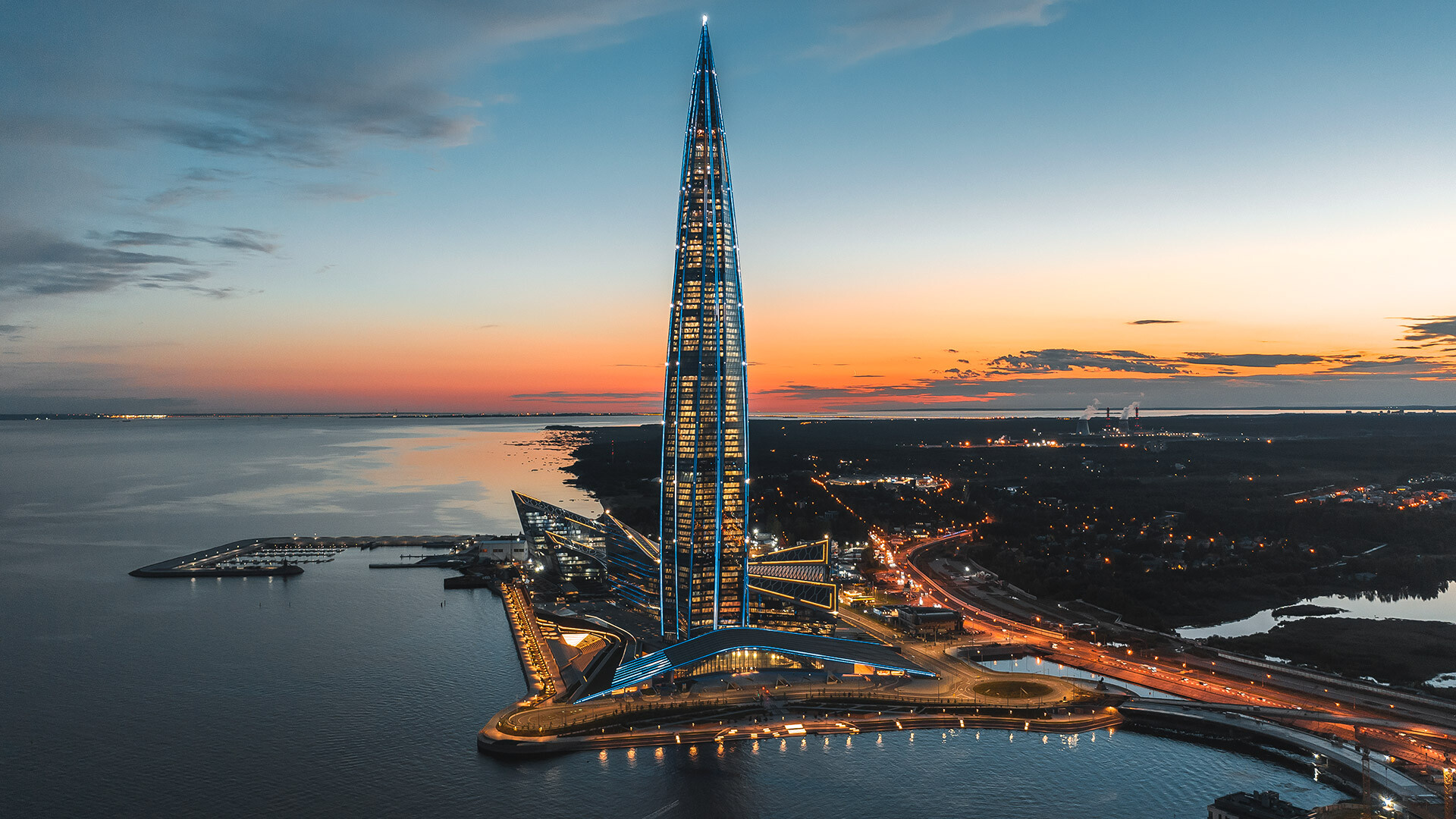
At first, St. Petersburg residents didn’t like Lakhta Center. Some called it “corn cob”, “Sauron’s tower”, “Gazpromtower”, “the needle.”
The current Lakhta Center (initially called the Okhta Center) was originally planned to be built near Bolsheokhtinsky Bridge, just across the Neva River from the magnificent historic Smolny Convent and city hall.
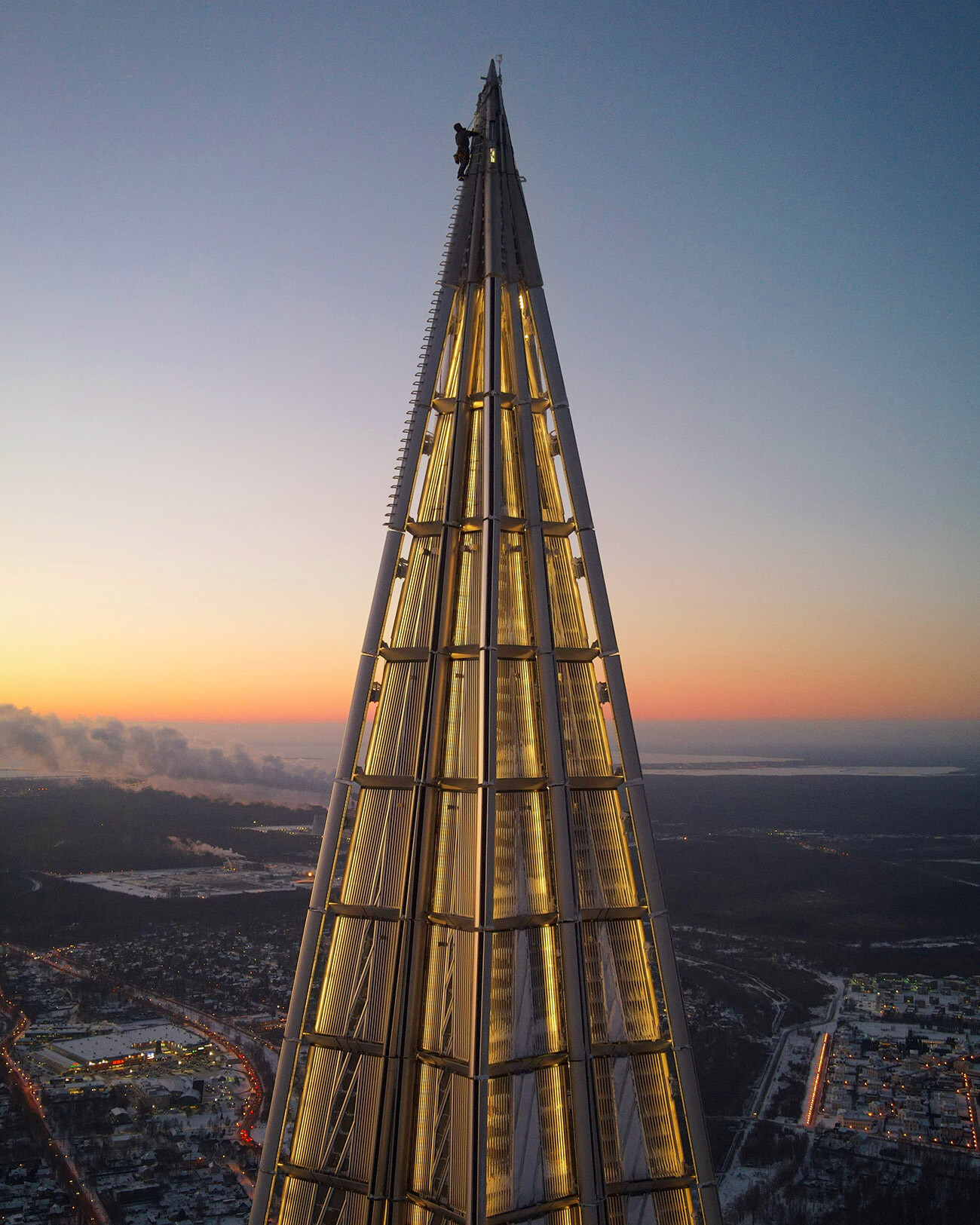
The top of the building
Lakhta CenterLocal preservationists protested, however, because the skyscraper would spoil the historic look of old St. Petersburg. As a result, the project was moved to Lakhta, on the city’s outskirts. That decision also allowed for the skyscraper’s height to be raised – from 396 to 462 meters.
The name Lakhta Center came with the territory. Lakhta’s origins date to an ancient Finnish settlement that was founded long before St. Petersburg. In translation from Finnish, the region is called “a bay” or “a gulf.” Indeed, the Gulf of Finland is nearby. How can one build a skyscraper on swampy soil with water so close?
Yes, the top layer of soil is unstable and could possibly shift. Underneath, however, lies a layer of ancient clay more than 600 million years old. The skyscraper is supported by 264 piles, and when its concrete foundation was built on March 1, 2015, the building was included in the Guinness Book of World Records.
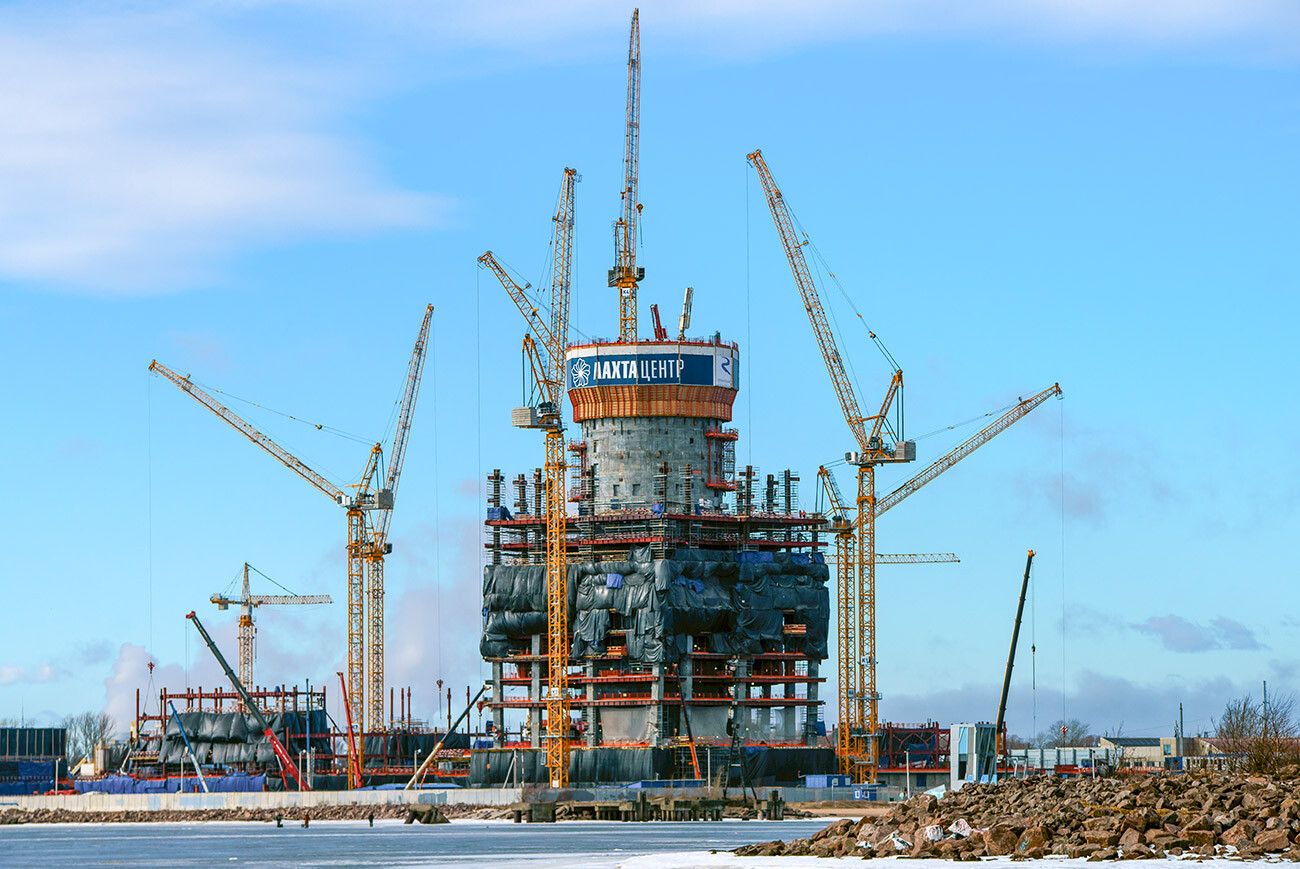
The Lakhta Center under construction, 2016
Alexei Danichev/SputnikThe Lakhta Center’s foundation set a record for continuous concrete pour: 49 hours. A total of 13 factories in the Leningrad Region prepared concrete around the clock; every minute a new truck entered the construction site. The entire structure can support 670,000 tons – which is the skyscraper’s weight. In 2019 the Lakhta Center beat the record of the Polavaram Dam in India.
Aside from its size – the Lakhta Center ranks 11th in the world by height and first in Europe – the skyscraper has other interesting features.

Foggy night Lakhta
Stanislav Zaburdaev/TASSA five-pointed star is at the base. The tower is designed in such a way that the five wings that make up the building’s outer structure turn almost 90 degrees and become narrow as you go up. This creates an effect as though the building is twisted.

The Lakhta seen from above
Legion MediaThe building has no roof and it ends with a spire. During thunderstorms the Lakhta Center is constantly struck by lightning and St. Petersburg’s residents manage to take beautiful photos.
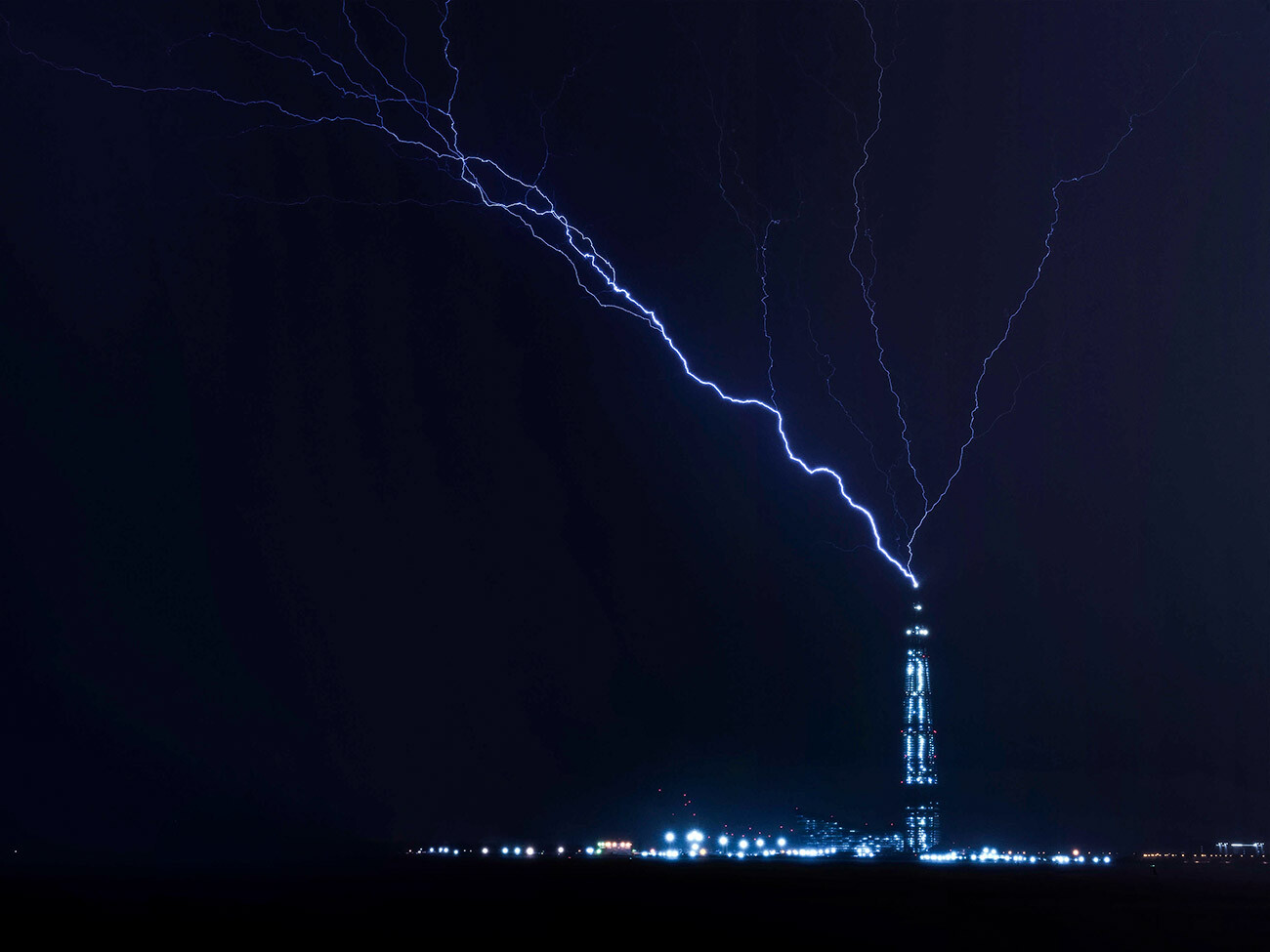
Lightning strikes the Lakhta Center
Legion MediaThe tower’s spire has an automated weather station that was installed in 2019. Since then it records temperature, humidity, strength and direction of wind data. The weather in St. Petersburg is rainy most of the time, so the spire often rises over the clouds.
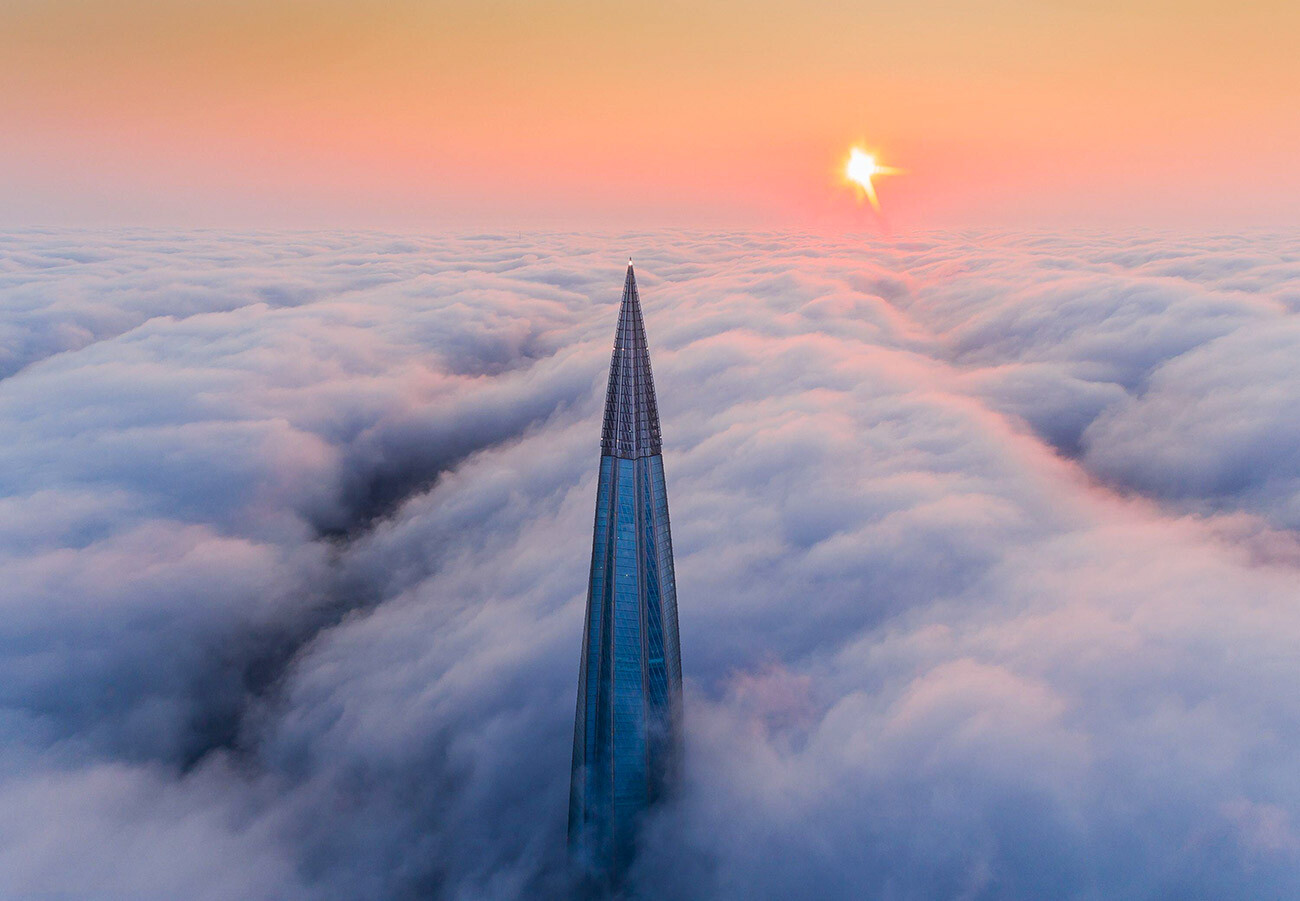
The Lakhta's spire above the clouds
Legion MediaThanks to its green illumination the skyscraper turns into a giant Christmas tree during winter. And during national holidays the Lakhta Center dons the colors of the Russian flag. The building is visible from almost any point in the city.
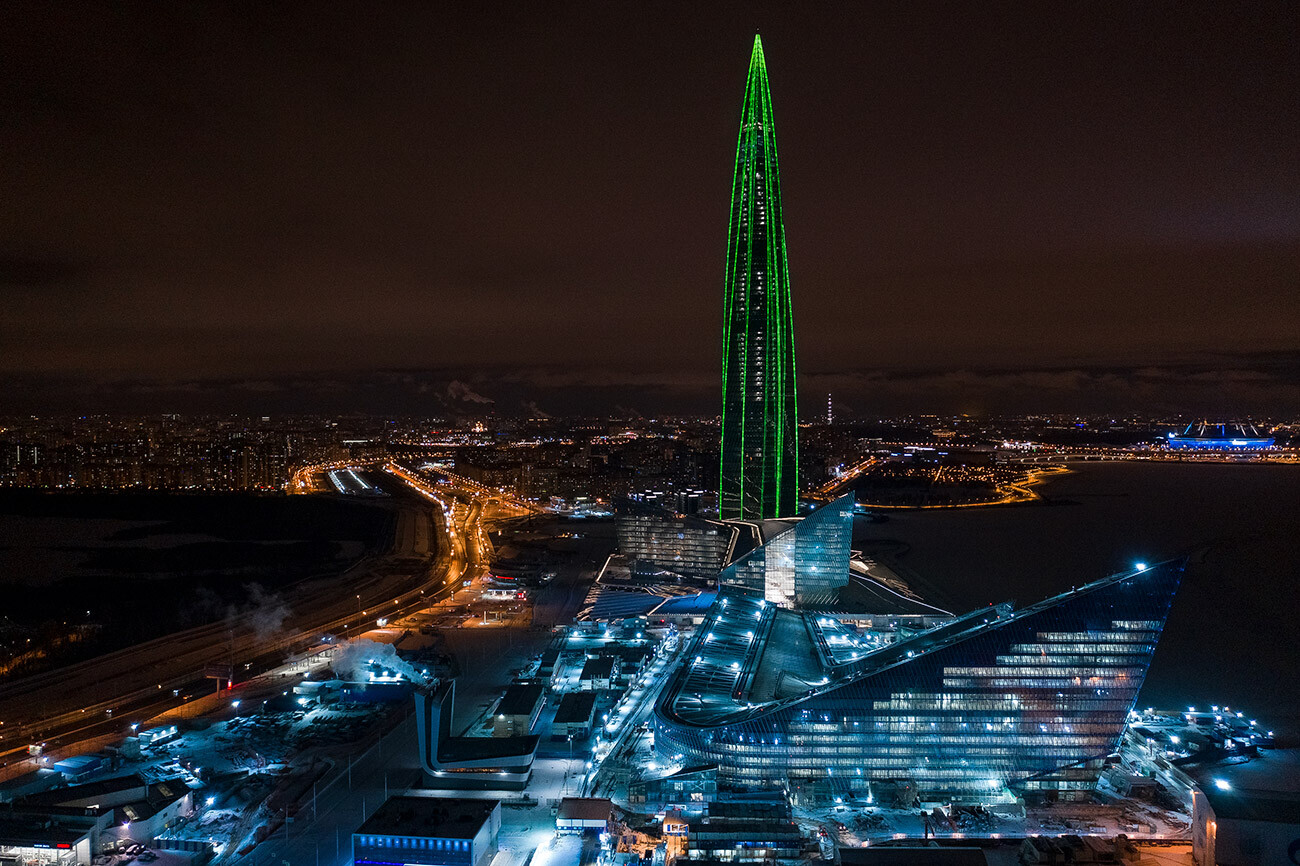
Spectacular night illumination
Even during the most ferocious storms the skyscraper’s top only deviates from its axis by 26 centimeters. Visitors on the observation deck won’t feel anything. By the way, in 2022 a sculpture of an angel was installed on the observation deck. It’s a precise copy of the angel on the Alexander Column in the center of Palace Square next to the Hermitage Museum. Now the city has two guardians.

The angel on the 88th floor of Lakhta is a copy of the one that crowns the Alexander Column on Palace Square
Press service of His Holiness Patriarch Kirill of Moscow and All RussiaIn 2021, the Lakhta Center won the CTBUH Award and best project in the facade engineering category.
There’s still no precise opening date for visitors and tenants. Plans call for a panoramic restaurant at 320-meters, and the observation deck will be even higher. A neighboring complex will have a planetarium, a transformable hall for city events, a sports complex, a scientific and educational center, and stores.
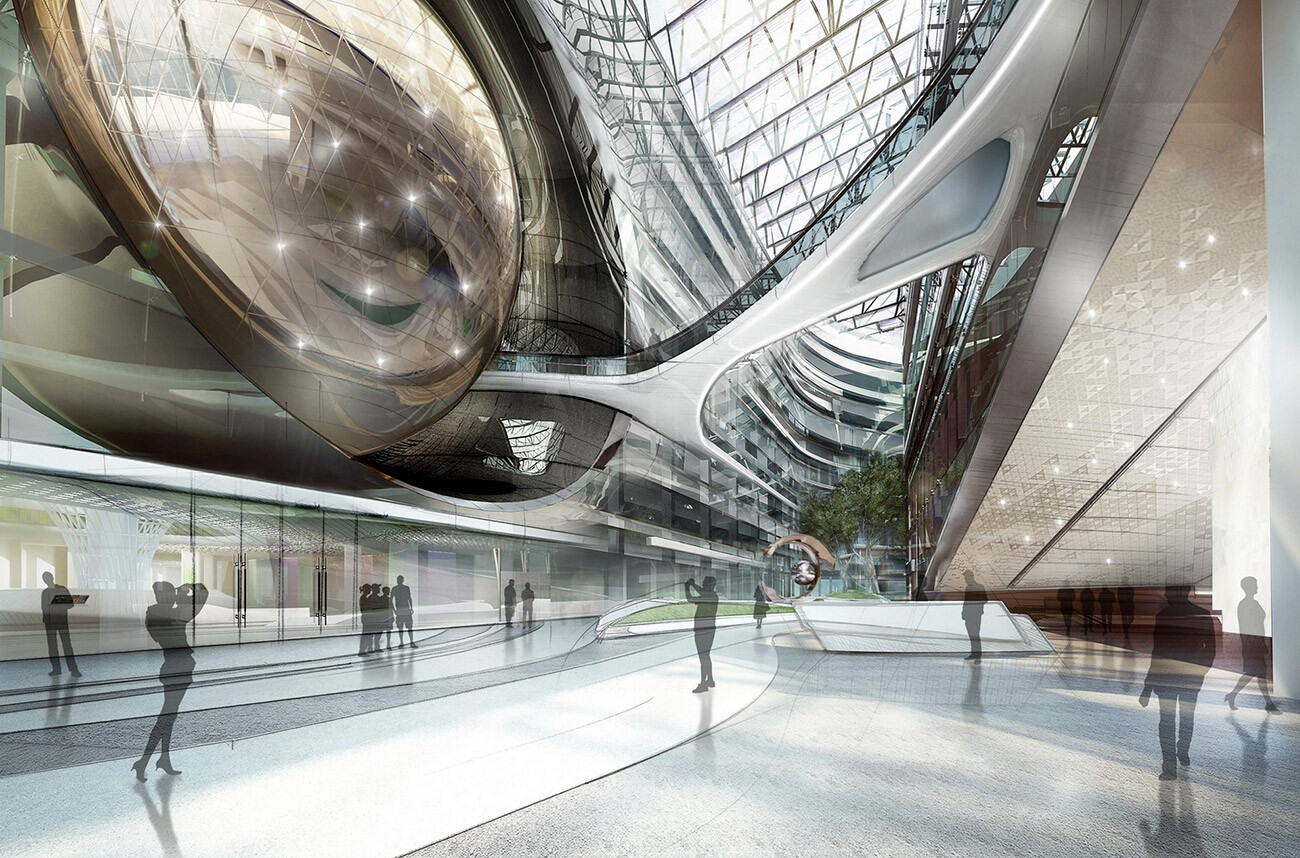
This is what the interiors are supposed to look like
Lakhta CenterIf you’re curious how the city looks from the height of the Lakhta Center, you can watch a live broadcast from the observation deck right now. This is what the visitors will see from the tallest building in Europe:
Dear readers,
Our website and social media accounts are under threat of being restricted or banned, due to the current circumstances. So, to keep up with our latest content, simply do the following:
If using any of Russia Beyond's content, partly or in full, always provide an active hyperlink to the original material.
Subscribe
to our newsletter!
Get the week's best stories straight to your inbox